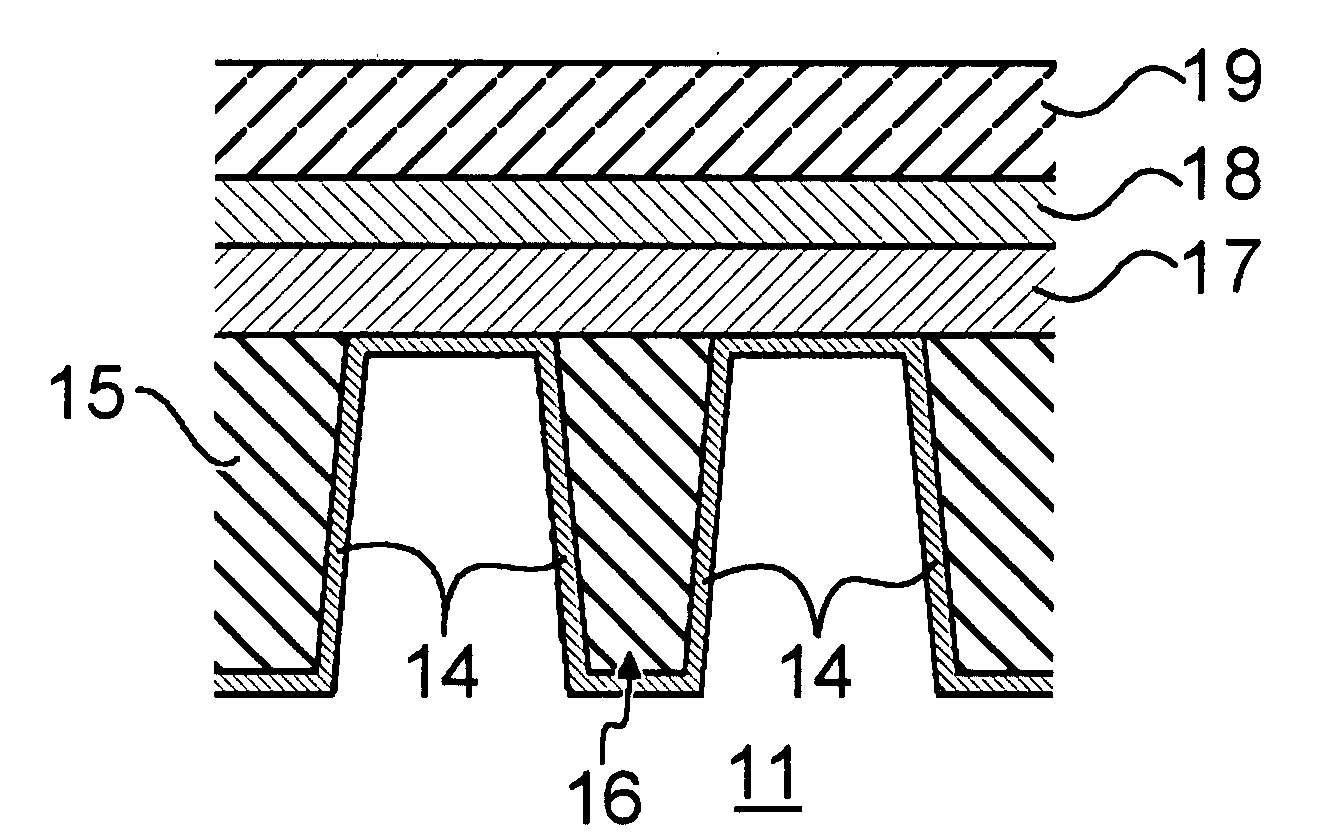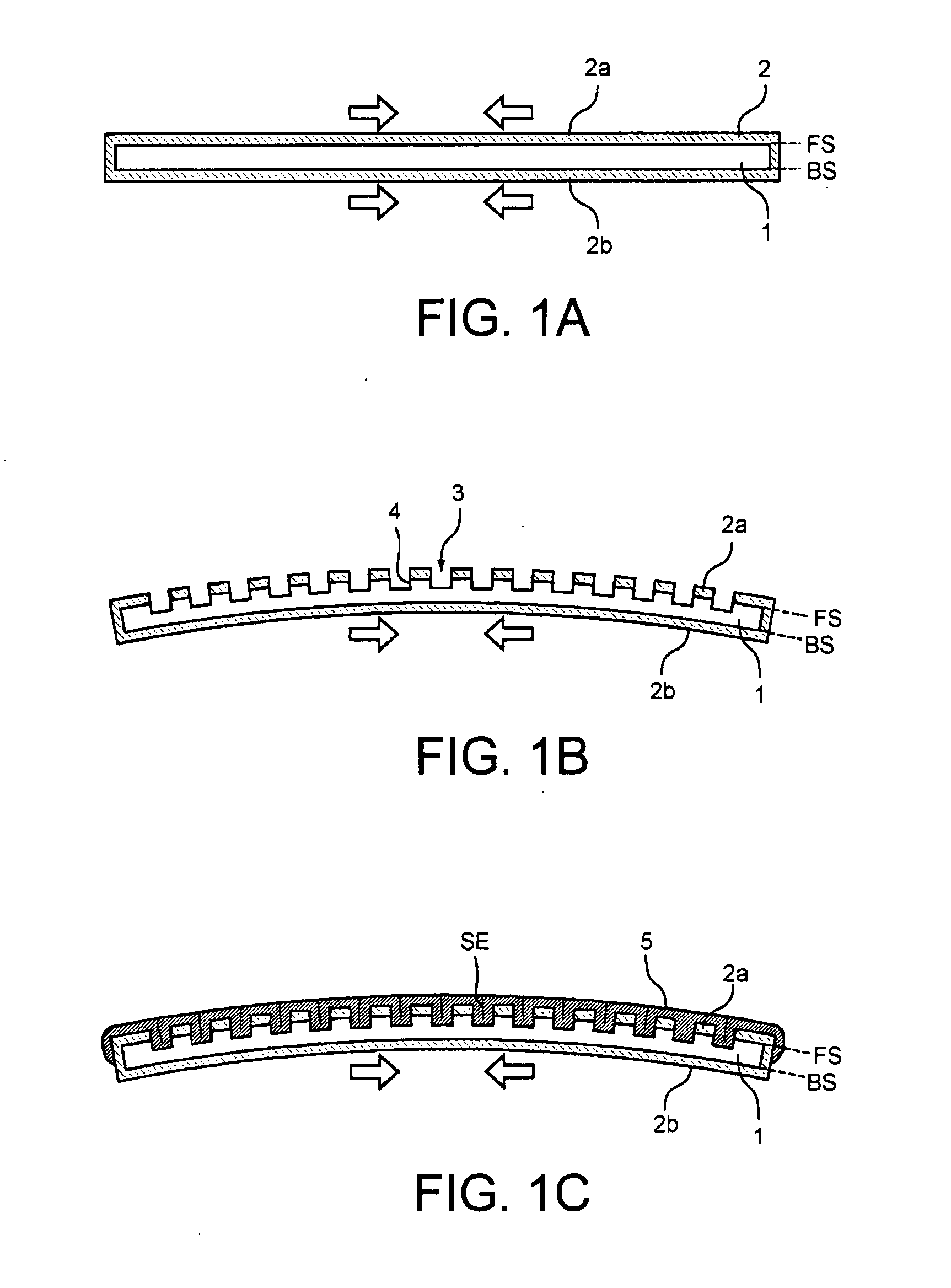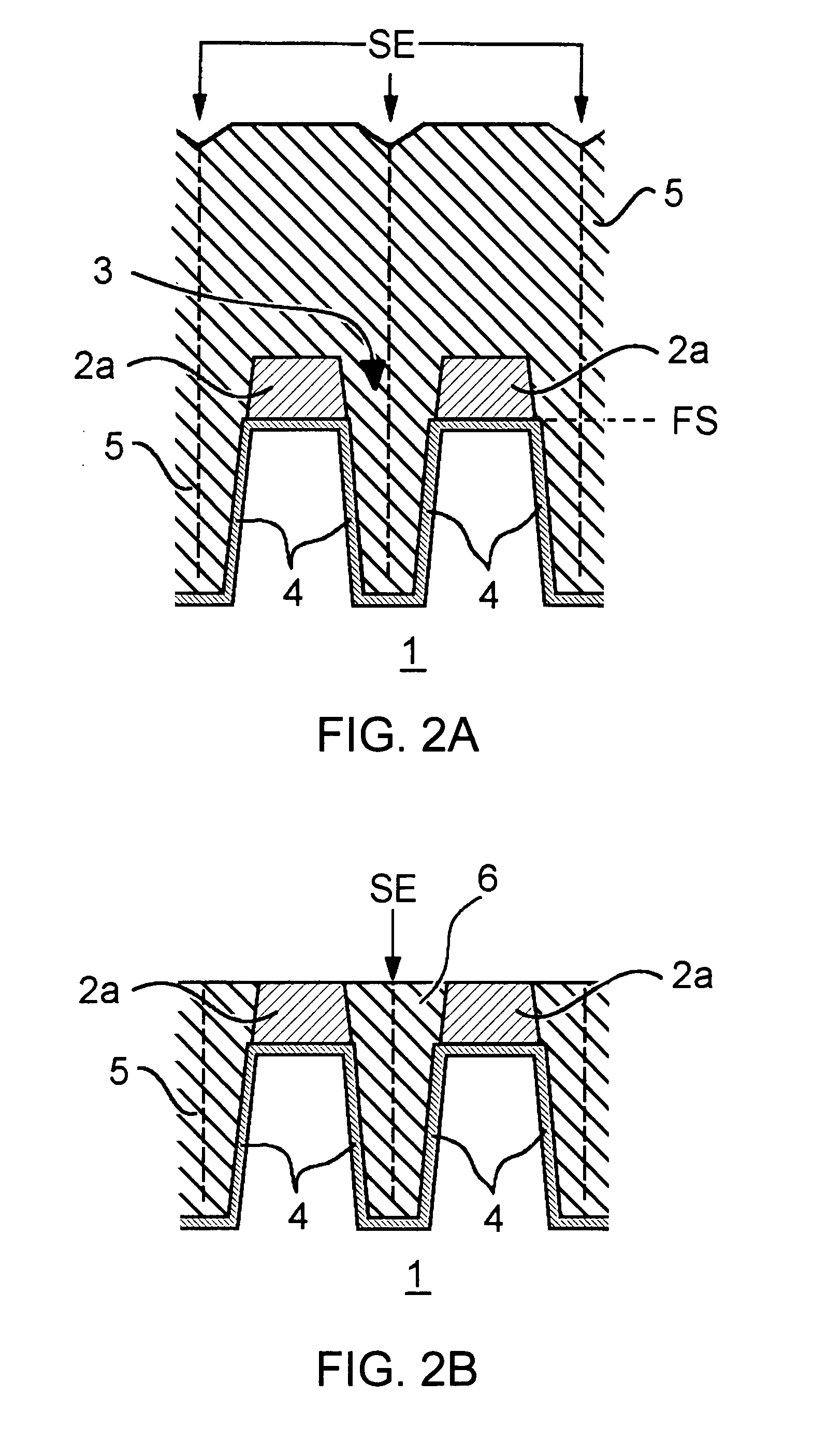Method of producing semiconductor device
a semiconductor device and semiconductor technology, applied in the direction of semiconductor devices, basic electric elements, electrical appliances, etc., can solve the problems of difficult burying of trenches by hdp-cvd method, unfavorable processing, and affecting so as to promote the removal of seams and improve the yield of semiconductor devices
- Summary
- Abstract
- Description
- Claims
- Application Information
AI Technical Summary
Benefits of technology
Problems solved by technology
Method used
Image
Examples
Embodiment Construction
[0047]A method of producing a semiconductor device according to an exemplary embodiment is described below with reference to FIGS. 3A to 3D and FIGS. 4A to 4E.
[0048]First, an oxide film (not shown) is formed on semiconductor substrate (semiconductor wafer) 11 by a thermal oxidation process. Then, silicon nitride film (SiN film) 12 is formed by an LP-CVD method. At this point, SiN film 12 is deposited on both sides of semiconductor substrate 11 as illustrated in FIG. 3A. That is to say, on front surface FS of semiconductor substrate 11 is formed SiN film 12a, and on back surface BF of semiconductor substrate 11 is formed SiN film 12b. SiN film 12 exerts a strong tensile stress on semiconductor substrate 11. However, the stress is in balance between front surface FS and back surface BS in the phase illustrated in FIG. 3A, so that “warpage” is not generated on semiconductor substrate 11.
[0049]A mask is formed from SiN film 12a on front surface FS of semiconductor substrate 11 through p...
PUM
 Login to View More
Login to View More Abstract
Description
Claims
Application Information
 Login to View More
Login to View More - R&D
- Intellectual Property
- Life Sciences
- Materials
- Tech Scout
- Unparalleled Data Quality
- Higher Quality Content
- 60% Fewer Hallucinations
Browse by: Latest US Patents, China's latest patents, Technical Efficacy Thesaurus, Application Domain, Technology Topic, Popular Technical Reports.
© 2025 PatSnap. All rights reserved.Legal|Privacy policy|Modern Slavery Act Transparency Statement|Sitemap|About US| Contact US: help@patsnap.com



